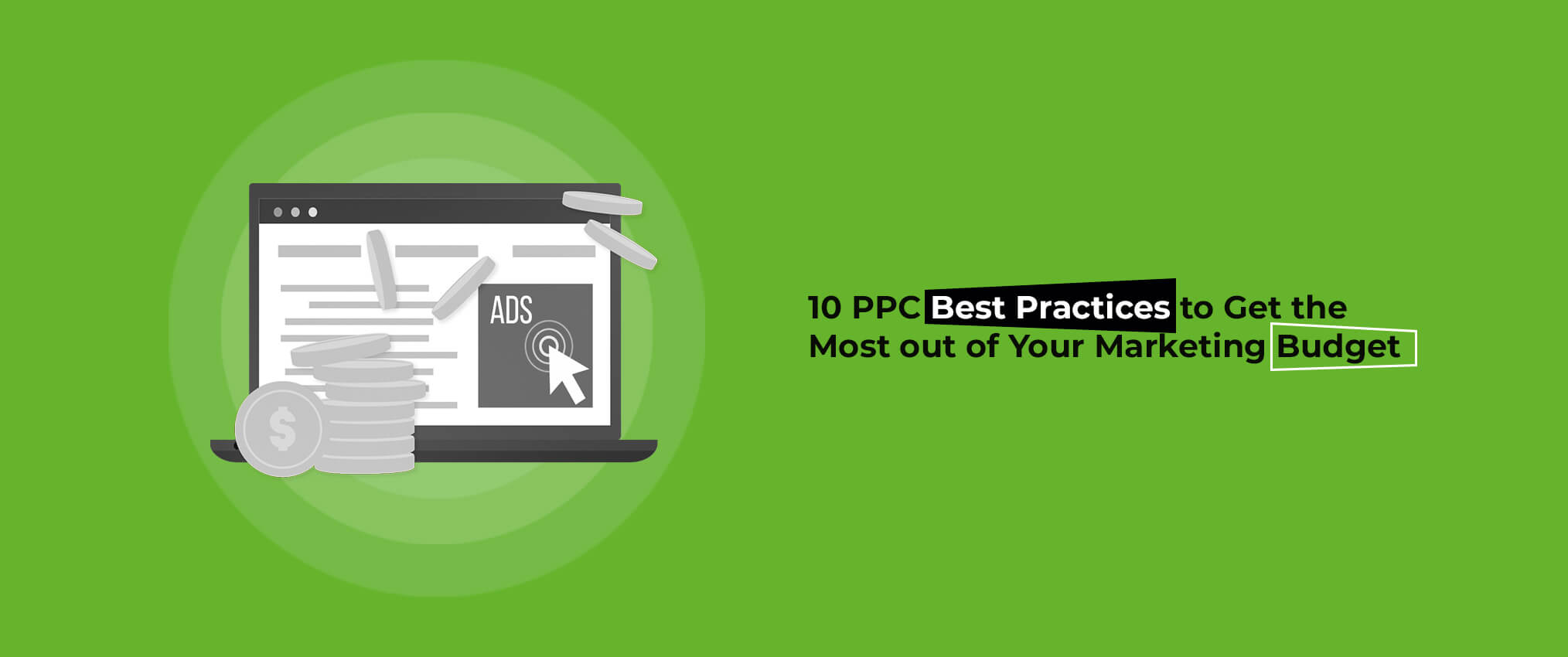Businesses now understand the importance of SEO and more than that, of Google Ads. Pay Per Click or PPC has become an inevitable part of marketing spends for most businesses that are serious about their digital marketing services performance. While organic reach is the best for any domain, it is almost impossible to reach the target without giving it a little push with PPC. There are many options to consider in PPC – search ads, display ads, location ads, shopping ads, social ads and more. Each has its own brownie points depending upon what your business does online and offline. It is important to understand that each platform offers a different set of options and maybe a different set of audience as well.
Here are 10 PPC best practices to make the most of your marketing budget:

Redefine Audience Targeting
Remember, your audiences are changing every day. There’s cut-throat competition across markets. They are bombarded with more options every second over various media they are using. Their behaviour patterns are also changing rapidly. Their demands and preferences are changing. Hence, it is important to redefine your audience targeting before you run a new ad or re-run an existing ad every time.
Research your Keywords
Unless you know what, your target audiences are looking for, you cannot ace AdWords, especially if it's not a display ad. As the audiences may change or the media, you have to make sure the keywords are well-researched taking these into consideration. Strong and relevant keywords can make your PPC optimized and cost-effective.
Plan the ads
Once you have the audiences and keywords ready, start planning the ads. Allocate the funds appropriately to different types of ads you plan to use and create different ad-sets for each target groups. This will help make the ads perform optimally and reduce double spending on same set of audiences.
Review the latest options available
Organizations that exclusively offer PPC management services keep track of the latest options available on various social media and search engines before they run any new campaign. They stay updated with the trending platforms for different target groups and industries to ensure that the client’s money is not wasted on obsolete platforms.
Check out more platforms
Depending upon the purpose and nature of the campaign, newer platforms can be identified and researched upon. For example, if job ads were more prevalent on job portals, news portals and LinkedIn, now Facebook also has a jobs section available. Similarly, for entertainment and youth-related campaigns, Snapchat or Tik Tok are good platforms to consider.
Optimize for Mobile
Studies and surveys reveal that more than 60% of digital and online engagements happen on mobiles or smartphones. More conversions are also happening on mobiles. Desktops have become obsolete and laptops are also getting slowly outdated. Handheld devices are more preferred. It is hence, important that the campaigns and keywords are optimized for mobile.
Automate Ads
Every domain is leveraging the benefits of automation and PPC campaigns can also be automated to perform best. But before the best offshore web development company decides to automate PPC campaigns, it has to carefully analyze how the campaigns are performing and set realistic goals to the campaigns. This has to be closely supervised to ensure optimal performance.
Make the most of Ad Extensions
Google’s ad extensions offer many significant benefits. Depending upon the purpose of the campaign, the agency can set the gallery ads, promotion extensions, lead forms, images etc. which will ensure the best results expected.
Optimize for Voice & Visual Search
With more users accessing the information on mobiles, make sure that your campaigns are optimized for voice and visual searches as well. These are important as most users would use these options to save time and get more accurate results.
Have a kickass landing page
It goes without saying that a kickass landing page will make a significant impact on the PPC ad performance. Make sure you don’t give away too much information and include CTAs at strategic sections on the landing page design. This way, the user would be tempted to ask for more details or make the next move.
